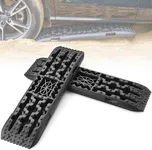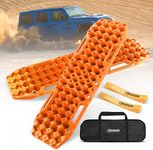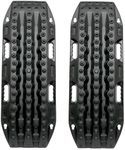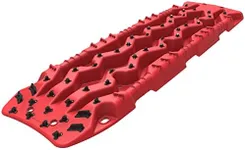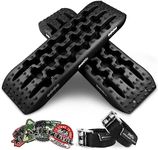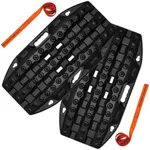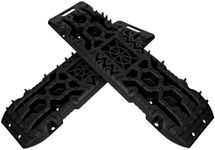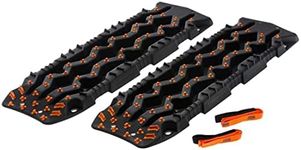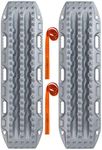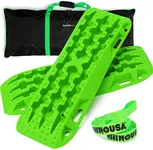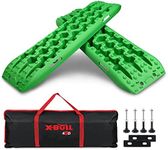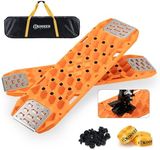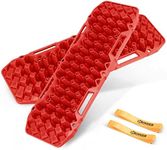Buying Guide for the Best Traction Boards
Traction boards are essential tools for off-road enthusiasts, overlanders, and anyone who might find themselves stuck in mud, sand, or snow. Their main purpose is to provide a stable, grippy surface for your vehicle’s tires to gain traction and get moving again. When choosing traction boards, it’s important to consider where and how you’ll use them, the type of vehicle you drive, and how much space you have for storage. Understanding the key features will help you pick the right set for your adventures and ensure you’re prepared for unexpected situations.MaterialThe material of traction boards determines their strength, flexibility, and durability. Most boards are made from reinforced plastics, which are lightweight and resistant to weather, but some heavy-duty options use metal or composite materials for extra strength. Lightweight plastic boards are easier to carry and store, making them suitable for occasional use or smaller vehicles. Heavier, reinforced boards are better for frequent use or larger, heavier vehicles like trucks and SUVs. Consider your vehicle’s weight and how often you expect to use the boards when deciding which material is best for you.
Size and WeightSize and weight affect how easy the boards are to handle, store, and use. Longer boards provide more surface area for your tires, which can be helpful in deep sand or snow, but they take up more space and can be heavier. Shorter boards are more compact and easier to store, but may not be as effective in extreme conditions. If you drive a larger vehicle or often travel in challenging terrain, opt for longer, sturdier boards. For smaller vehicles or occasional use, compact boards may be sufficient and easier to manage.
Grip PatternThe grip pattern refers to the raised bumps or ridges on the surface of the boards that help your tires grip and prevent slipping. Aggressive, deep patterns offer better traction in mud, sand, or snow, but can be harder to clean. Smoother or less pronounced patterns are easier to maintain but may not perform as well in very slippery conditions. Think about the types of terrain you’ll encounter most often—choose a more aggressive pattern for challenging environments, or a simpler one for light use.
Load CapacityLoad capacity is the maximum weight the traction boards can support without breaking. This is especially important for heavier vehicles like trucks, vans, or fully loaded SUVs. Boards with higher load capacities are built to withstand more pressure and are less likely to crack under stress. Check your vehicle’s weight and make sure the boards you choose can handle it, especially if you carry a lot of gear or travel with multiple passengers.
Ease of Use and Recovery FeaturesSome traction boards come with features that make them easier to use, such as handles for carrying, holes for mounting or securing, and shovel ends for digging out tires. These features can save time and effort when you’re stuck. If you want a straightforward, no-fuss experience, look for boards with built-in handles and shovel tips. If you prefer a minimalist approach, simpler boards without extra features may be lighter and easier to store.
Stackability and StorageStackability refers to how easily the boards can be nested or stacked together for storage. Boards that stack neatly take up less space in your vehicle and are easier to transport. If you have limited storage space or want to carry multiple boards, look for designs that are slim and stackable. If space isn’t an issue, you can prioritize other features instead.
